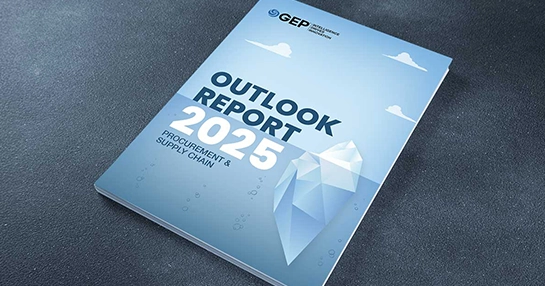
Looking to Get More Out of Procurement? Get AI-Powered Autonomous Sourcing
- Procurement can contribute to larger business goals in several ways.
- However, it must accelerate technology deployment to succeed in these endeavors.
- AI-powered autonomous sourcing involves the use of advanced tools to automate sourcing and supplier selection.
October 08, 2025 | Procurement Software 4 minutes read
What does a typical day for a sourcing manager look like? Send out requests for proposals (RFP) to suppliers, assess proposals and compare bids. However, that’s not all.
While assessing proposals, you also need to check the supplier’s track record, compliance, product quality, sustainability strategy, etc.
Clearly, sourcing and procurement professionals are today expected to go beyond their tactical duties and work toward strategic business goals.
As global economic, trade and political uncertainties persist, it is imperative for different business functions, including sourcing and procurement, to step up to the challenge and find new ways to navigate headwinds.
The question now is: How can procurement succeed in these endeavors and contribute to building an agile and resilient business?
The short one-word answer is several ways, given the pace at which artificial intelligence (AI) is evolving.
In fact, 64% of respondents to The Hackett Group’s 2025 Procurement Agenda and Key Issues rate AI and generative AI as the number 1 trend, along with digital procurement and automation, that will have the greatest transformational impact on procurement.
Procurement can leverage AI to automate many of its routine functions. It can use technology to make sense of huge volumes of data and make informed decisions that align procurement with larger business goals.
From sourcing and supplier selection to contracting and supplier performance management, procurement has many opportunities to deploy technology and add more value to the business.
Let’s look at sourcing.
How Autonomous Sourcing Works
Traditional sourcing methods are slow, time-consuming and prone to error. Autonomous sourcing changes the way procurement professionals work. This involves leveraging advanced technology and tools to automate routine tasks and derive meaningful data insights.
The use of AI technology eliminates the need for a sourcing manager to manually send out RFPs, review supplier proposals, compare bids and negotiate contracts. The system automatically generates RFPs, evaluates supplier responses and shortlists those that meet the predefined criteria. This saves a lot of processing time. It also allows procurement to access accurate information, make informed decisions and negotiate better deals with suppliers.
Benefits of Autonomous Sourcing
• Simplifies selection
Autonomous sourcing simplifies supplier selection by quickly assessing supplier performance and capabilities. It automates this process or makes recommendations based on past performance or business network. Sourcing teams can use this information to choose the right suppliers.
• Saves costs
Sourcing teams can automate routine tasks and allocate resources more efficiently. This helps reduce administrative costs and make optimum use of budgets.
• Works proactively
The autonomous model proactively tracks market conditions and shares relevant information with users. Real-time tracking improves visibility and helps businesses manage their supply chains more effectively. For example, if commodity prices are likely to rise or fall, autonomous sourcing alerts the user and even initiates procurement activities that can be automated or set for the user’s review.
• Uses past and real-time data
The autonomous sourcing model works both with historical data derived from past experiences and actions as well as real-time data obtained via digital tools. This allows the user to learn from past data as well as leverage real-time data to make the best use of available opportunities.
• Brings workforce up to speed
Autonomous sourcing boosts technology adoption and use among the workforce. It allows the user to make optimum use of technology and tools in vendor selection.
• Improves collaboration
AI-powered sourcing technology integrates with enterprise resource planning (ERP) and customer relationship management (CRM) systems. This integration enhances collaboration with seamless data sharing between different internal teams.
Where Autonomous Sourcing Can Make a Big Impact
Here are some use cases in sourcing where AI can make significant impact:
• Finding Suppliers
Automation tools can help identify the right suppliers based on price, quality, delivery record, past performance, sustainability standards and other predefined criteria.
• Managing Bids
Technology allows sourcing managers to send out RFPs electronically and collect responses in a centralized location. This ensures fair and consistent evaluation of all bids.
• Negotiating Contracts
By looking at past agreements and historical data, AI can negotiate better deals and contract terms. For example, a business can leverage the software to propose terms that have resulted in better pricing or service levels in the past.
• Monitoring Performance
Autonomous systems regularly monitor supplier performance against key performance indicators. Ongoing monitoring further aids a business in spotting performance deviations.
How to Kickstart (and Boost) Technology Adoption
Imagine you have recently deployed autonomous sourcing technology. How can you now ensure that users adopt this technology and understand how to get the most out of it?
According to Santosh Nair, chief product officer at GEP, user experience is key to ensuring that end-users adopt technology. User experience is now much more comprehensive than sleek screens and a modern look, he says in this webcast. It involves an intelligent system that can bring in the right data to the user at the right time. This means that the system should be able to proactively bring relevant information to the user. As a result, the user can evaluate options and make informed, data-driven decisions.
For example, the system should have the intelligence to assess supplier performance and send alerts for suppliers with declining performance. Access to this information can enhance user experience and therefore boost adoption.
Learn how you can leverage the benefits of autonomous sourcing with GEP’s AI-powered source-to-pay procurement software.



